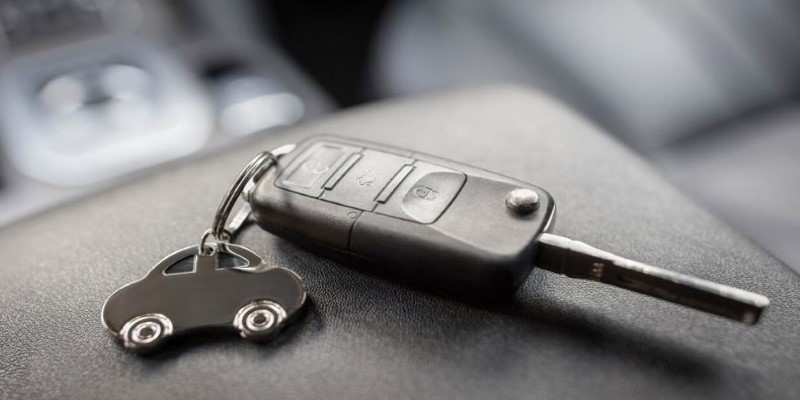Lease a Car Like a Pro: What You Should Know Before You Start
Leasing a car can feel like stepping into unknown territory. You’re not buying the car, but you’re also not renting it for a weekend getaway. It’s something in between, where you get to drive a new vehicle without committing to full ownership. That sounds great, but is it really that simple? Not exactly. Leasing comes with rules, costs, and fine print that can turn what seems like a sweet deal into a financial headache.
Before you enter into a car lease agreement, you should be aware of the terms you're getting into and how leasing really works. Then, there are some tips for a good deal on a car lease.
How Car Leasing Works?
Car leasing is a long-term rental agreement in which you pay to use the car instead of purchasing it outright. You do not borrow money; you enter into an agreement with a contract to use the vehicle for a certain number of years—typically two to four years—and pay on a monthly basis. At the end of the lease, you may return the car or buy it at an agreed-upon price in some agreements.
Leasing is very different from financing a car purchase. With a loan, you pay for the full value of a purchased car. But with leasing, you are paying for the car's depreciation during the lease term plus interest and fees. This is why the payments on leased vehicles are usually lower than loan payments on the same car. However, reduced monthly payments will not necessarily reduce the overall purchase expense. Leases have mileage constraints, wear-and-tear liability, and potential early termination charges that can surface unexpectedly.
A credit check will be required for starting a lease, as well as a down payment, though some leases may offer zero-down options. Finally, you agree to the car lease agreement. The contract should state the lease term, allowable mileage, the monthly payments, and any excess mileage or vehicle return penalties if you exceed mileage limits or bring the car back in poor condition. It's important to read and understand this information before you sign.
Finding the Right Lease Deal
Not all lease deals are created equal. Some may offer low monthly payments but come with high upfront costs or strict mileage limits. To find the best lease, you need to compare offers from different dealerships and understand the key factors that affect lease pricing.

One of the biggest factors in leasing costs is the car's residual value, which is the estimated value of the car at the end of the lease. The higher the residual value, the lower your payments because you're covering less depreciation. Luxury brands and models that hold their value well tend to have better lease deals.
Another important factor is the money factor, which is essentially the lease version of an interest rate. The lower the money factor, the less interest you’ll pay. You can negotiate this rate just like you would on a car loan.
Lease terms also include mileage limits, typically set between 10,000 and 15,000 miles per year. If you exceed the agreed mileage, you’ll face extra charges per mile. If you drive a lot, consider negotiating a higher mileage limit upfront rather than paying expensive penalties later.
When comparing lease deals, look beyond the monthly payment. Consider the total cost of the lease, including upfront fees, taxes, and potential end-of-lease charges. Some leases require a security deposit, and most charge a disposition fee when you return the car. Understanding all costs will help you decide whether leasing is truly a good financial move for you.
What Happens at the End of a Lease?
When your lease term ends, you have a few options. The most common is simply returning the car to the dealership. You’ll need to ensure the car is in good condition and within the allowed mileage limit to avoid extra fees. Most leases include a wear-and-tear clause, meaning if the car has excessive damage or missing parts, you may be charged for repairs.

Another option is a lease extension, in which you continue leasing the car for a short period, usually at the same monthly rate. This can be useful if you need more time before committing to a new lease or purchase.
Some lease agreements offer a buyout option, allowing you to purchase the car at the end of the lease. The buyout price is usually set in the car lease agreement based on the residual value. If the car's market value is higher than the buyout price, purchasing it might be a good deal. However, if the car's value has dropped significantly, it may be better to walk away and lease or buy a different vehicle.
If you want to switch to a new car before the lease ends, you might be able to transfer your lease to someone else. Lease transfers allow another person to take over your contract, which can help you avoid early termination fees. Not all leasing companies allow this, so check your lease terms before considering this option.
Conclusion
Leasing a car can be a great way to drive a new vehicle without the long-term commitment of ownership, but it’s not for everyone. Understanding the details of a car lease agreement, comparing different deals, and knowing what happens at the end of a lease are all essential to making an informed decision. While lower monthly payments may seem attractive, hidden costs, mileage limits, and lease-end fees can add up quickly. Before you sign anything, be sure that leasing aligns with your driving habits, budget, and long-term financial plans. With the right knowledge, you can lease a car with confidence, knowing that you’re getting the best deal for your needs.












